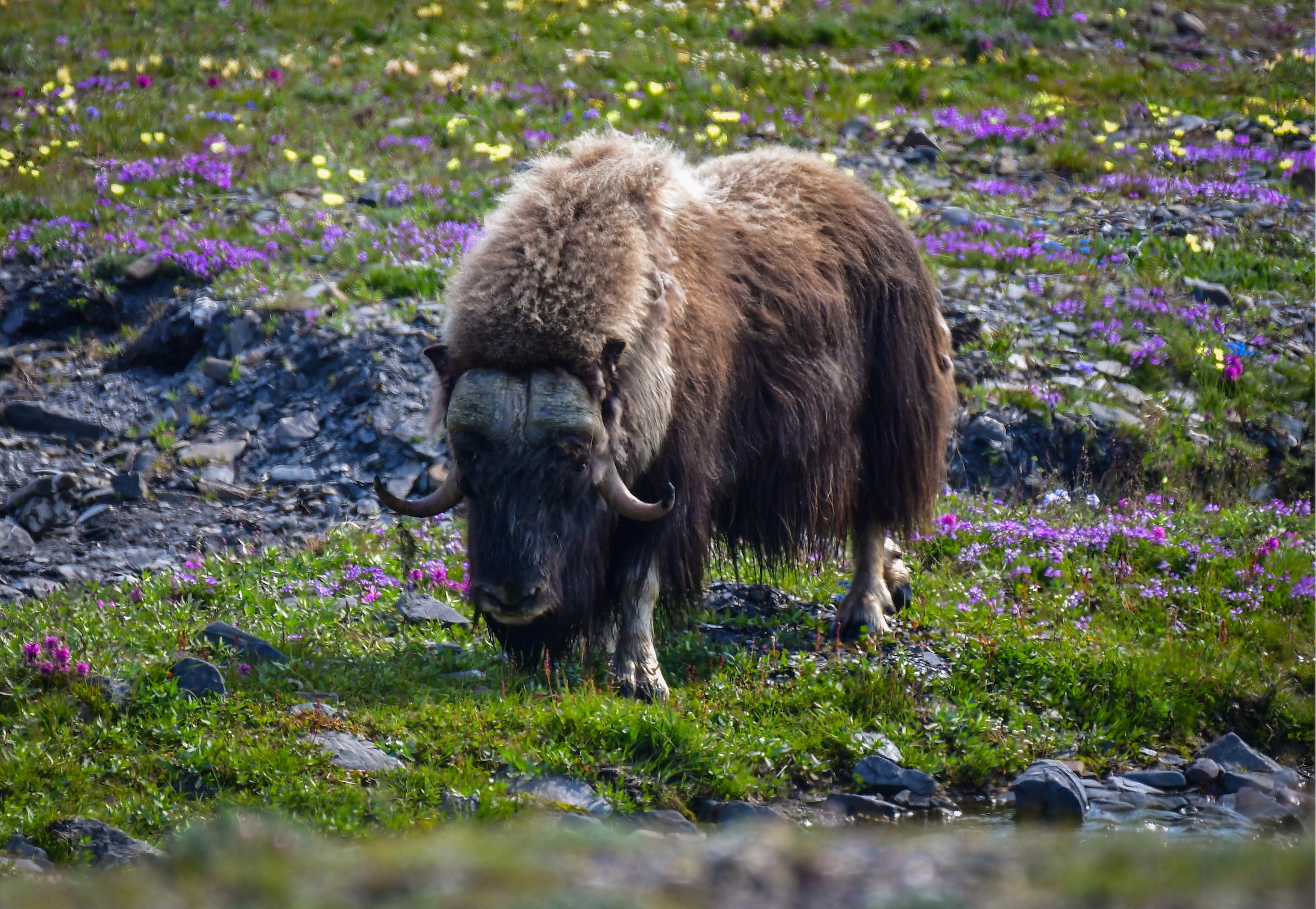ID :
582438
Tue, 11/17/2020 - 09:46
Auther :
Shortlink :
http://m.oananews.org/index.php//node/582438
The shortlink copeid
Russia’s first muskox farm in Siberia's Taimyr receives ten calves

KRASNOYARSK, November 16. /TASS/. Ten muskox calves were delivered from Yamal to the Arctic village Volochanka in northern Krasnoyarsk Region to set up Russia’s first muskox farm there. The farm will produce qiviut (soft underwool), a representative of the Khaski-Tyal family community Denis Terebikhin told TASS.
The muskox farm is part of a project to establish ethnic villages. The region will create four villages to keep the traditional lifestyles and occupations of the indigenous peoples. The project in Volochanka is implemented by the Khaski-Tyal family community, which has won a regional grant.
"The transportation of calves was very difficult because of the weather conditions <…> In Russia, it will be the first farm, where muskoxen will be domesticated," he said. "Nowadays, muskoxen live in different areas: on Taimyr, in Yakutia, on Wrangel Island - some animals are wild and some live in semi-free conditions in huge enclosures but are still undomesticated."
Muskox (musk ox) is a massive animal with a large head, short neck and powerful rounded horns. Adults have thick and long wool hanging down to the ground. Males weigh up to half a ton, females - less. Muskox is similar to bison, but most scientists nowadays refer the species to the goat subfamily. This duality is reflected in their name.
The oxen lived in Siberia, including on Taimyr, about 3,000 years ago, archaeologists say. Their herds grazed on pastures next to mammoths and woolly rhinoceroses. The population went extinct due to the climate changes and human hunting. About 50 years ago, muskoxen's reintroduction (return to the territory where they used to live) into Siberia began.
Reintroduction of muskoxen
In 1974, Canada gave ten muskoxen to the Soviet Union as a present. They were brought to the Bikada River area. Later on, another herd arrived from the US. Eight years later, as many as 66 animals inhabited Taimyr. Nowadays, scientists say the herd numbers a few thousand animals. From Taimyr, the oxen were taken to other regions. The history of the animals’ re-acclimatization on Yamal dates from 1997.
On Yamal, muskoxen live in an enclosure complex of the Polar-Urals Nature Reserve. In early autumn 2020, the park had 107 animals, including 27 calves. In order to control the enclosures’ feed base, ten calves were brought to the Krasnoyarsk Region without damaging the population.
The mission to deliver the calves to Volochanka took a few days. Three air companies were involved. Near Tukharda village on Taimyr, bad weather conditions made a helicopter change the course for Norilsk, where it got stuck for a few days. According to the community’s representative, everyone helped the young breeders there: Yamal's authorities, the nature park, the local administration and the Norilsk Nickel company (Nornickel).
"The weather was not favorable, but we triumphed over it. We were worried about the calves, but our doubts faded away since zoologist Ravil Mullayanov from Royev Ruchei Zoo [the Krasnoyarsk zoo in charge of the project] was with us. We shouldn’t have worried, the calves were fine, and they feel very well now," he said. The adaptation in Volochanka is going very smoothly, he added.
Kilograms of valuable qiviut
The biggest challenge facing the Arctic farmers now is to live through the winter. The calves are six months old and the farmers need to raise them, providing protection from people and wolves. As yet, the calves are in the 'kindergarten' enclosure, and later on they will be moved into a big one.
"The farm’s goal is to produce qiviut - the muskox underwool. This is product number one and actually the only one. We do not expect to get milk, meat or any other products from these animals," the farmer said.
Every spring as many as up to four kilos of qiviut may be hand-combed off an animal. On the international market one kilo may cost $330-385. Presently, the main producers are North America and Greenland, where most qiviut is obtained during hunting.
In Volochanka, qiviut can make a business of the future. In the wild, the oxen begin multiplying at about five years of age. In protected conditions with good feeding, the term may shift by one or two years. The Khaski-Tyal community has ambitious plans - to conduct selection and genetic studies, like at any breeding farm.
"We are interested in fresh blood. The problem is - all the muskoxen in Eurasia are offspring of the animals brought to Taimyr in 1974. In my opinion, we need fresh blood," Terebikhin said. "Our farm could ensure a gene pool for the continent, a genetic bank."
Oxen and humans
In the past, people would not domesticate muskoxen, unlike Northern deer. The work began only in the 20th century, and nowadays animals are kept in semi-free conditions in the US, Canada and Norway. Some farms are located in Alaska.
According to the zoologist, the domestication of one ox may take two to three years. Adults are aggressive and dangerous, they may go at people, he said. This is why, the zoo specialists never enter enclosures with animals. However, domestication is possible.
"For as long as the animals are still little, people should work with them, contact them, feed them out of hand," the expert said.
Read more





